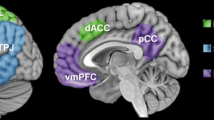Abstract
After having stressed the distinction between general adaptive systems and specific functional systems, the author argues that emotions constitute a general adaptive system distinct from, but interacting with, the cognitive system, considered as the other (more evolved) adaptive system.
The main characteristics of the emotional system are its componential nature and its hierarchical organization. These basic features of the emotional system, as well as the brain structures subserving the different components of emotions must, therefore, be taken into account in the neuropsychological study of emotional disorders. The main components of emotions considered in this educational review are: the evaluation of emotional situations; the emotional response with its expressive-motor and autonomic components and the inhibition of socially unacceptable spontaneous emotional responses. The main levels identified in the hierarchical structure of emotions are: a level of automatic, spontaneous functioning and a level of conceptual processing of emotional information and of controlled selection of the most appropriate response. The brain structures identified as critically involved in these different components and levels of emotions are: the amygdala, considered as the structure where the external stimuli are appraised in terms of their emotional significance; the insular cortex and the hypothalamus, crucially involved in the generation of the autonomic components of emotions; the ventral striatum, which subserves the execution of stereotyped emotional action patterns and the ventro-medial frontal cortex, playing a critical role in functions of control and inhibition of socially unacceptable emotional responses. The different emotional involvement of the right and left hemispheres in different aspects and levels of emotional processing is also shortly discussed and the quality of emotional disturbances resulting from injury to these brain structures is briefly considered.
Similar content being viewed by others
Author information
Authors and Affiliations
Additional information
Received: 2 February 2001 / Received in revised form: 2 April 2001 / Accepted: 9 April 2001
Rights and permissions
About this article
Cite this article
Gainotti, G. Disorders of emotional behaviour. J Neurol 248, 743–749 (2001). https://doi.org/10.1007/s004150170088
Issue Date:
DOI: https://doi.org/10.1007/s004150170088




